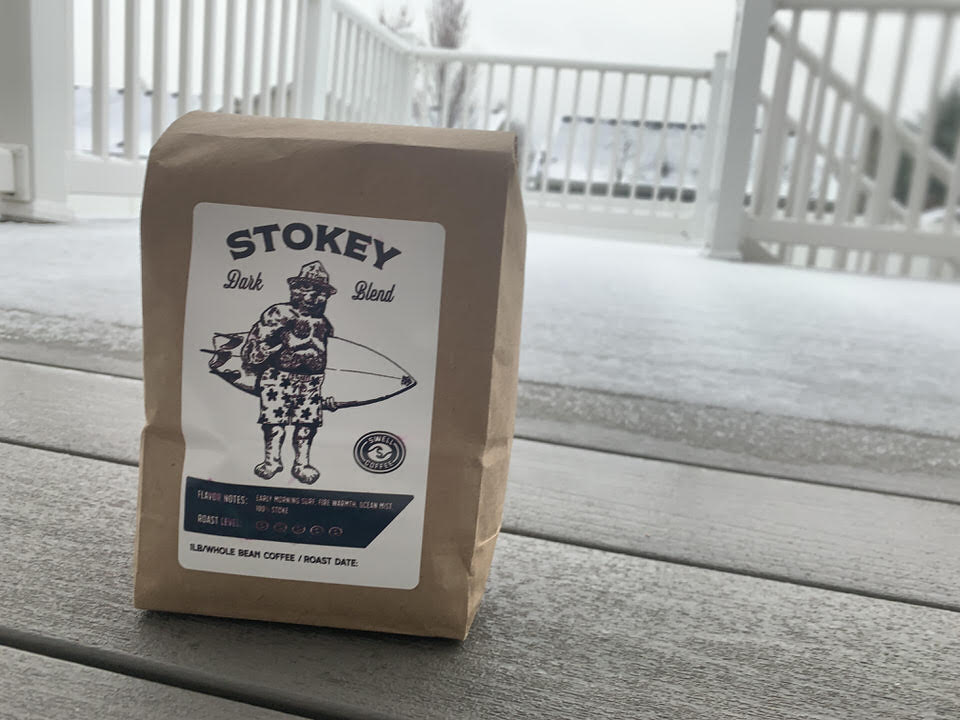Average Josh tips for above-average joe
<Coffee for the Average Josh, Part 10 of 10>
Remember the “West Wing” episode that opened with Josh Lyman pulling yesterday’s coffee filter out of the kitchen trash to re-use for his morning brew? Yeah, let’s go ahead and use that as the baseline for no-nos when it comes to making coffee at home.
Are you coffee lazy like Lyman but, you know, actually want the liquid in the cup to taste good? Me too. Here are three yes-yeses that have helped me upgrade my at-home coffee experience with minimal effort — and the two I want to try next.
I said yes to fresh, whole beans.
When possible, I buy directly from the roaster. For example, at Spokane-based Thomas Hammer Coffee Roasters, you can buy a pound of beans from a Thomas Hammer shop within a week of roast date. You can purchase the same coffee from a local supermarket bin, but there are fewer controls in place to guarantee freshness.
What’s the big whoop? After it’s roasted, coffee goes through the same natural process your uncle employs on Thanksgiving evening: degassing.
Gasses, including carbon dioxide, are built up inside the bean during roasting. A lot of those gases are released in the first few days following, and that’s actually a good thing for taste. The sweet spot for brewing comes after a short period of post-roast rest.
However, some of the carbon dioxide that remains over time is an important indicator of freshness. If beans sit too long, the flavors lack spunk and become stale.
This process accelerates more quickly once the beans are ground. In addition to losing carbon dioxide more quickly, ground beans open up more exposure to humidity and oxygen, both of which impact the richness and depth of your flavor.
I said yes to a burr grinder.
Coffee loses much of its flavor within 30 minutes of being ground. Google it. It’s a thing.
Also a thing: If you can only spend money on a fancy coffee maker or a grinder, choose the grinder.
Earlier this year, I bought a manual burr grinder. It’s adds a couple minutes of work, but the electric ones are expensive, and I’ve enjoyed how it’s become part of my morning ritual.
Does it really make a difference? Uh-huh. Even I noticed it with a side-by-side test — fresh, burr ground vs. pre-ground.
So what’s the problem with the less expensive blade grinders? The difference is in getting an even grind. Dialing in your grind size with your brew method is important for proper coffee extraction. Grind it too coarse, and the resulting brew could be too weak. Grind it too fine, and the coffee will be over-extracted, causing a power-packed flavor hodgepodge best described by the word “bitter.”
The more erratic grind produced by a blade results in a mishmash of particles extracting at different rates, causing uneven flavor. There is a science to coffee, so aim to control the variables as much as possible.
I said yes to cleanliness.
When it comes to your coffee equipment and materials, treat it like the playlist for a middle school dance: Keep it clean.
Follow the care and cleaning instructions. Keep vinegar on hand for occasional deep cleanings. Google a how-to video if you have to.
This one seems basic, but oil buildup is a thing, and it impacts your flavor (think burnt to a crisp with a hint of earthiness).
As for coffee ingredients, make sure your water supply is also clean and pure (one of the most important of the five flavor factors since water’s 98% of your drink).
My next yes: A coffee scale
I believe there is a science and precision to consistently good coffee at home, but after a while I just “eyeball” it. About the right amount of water plus about the right amount of ground coffee equals about what I was looking for.
But when I want to do better, I measure everything out to the ratios that have worked for me before. And according to the experts, even then I’m doing it wrong, because I use volume measurements like cups and tablespoons. Apparently, coffee should be measured in weight, not volume (something to do with differences in densities).
If I’m really going to dial in my coffee routine, a scale may be in my future.
The yes after that: New brewing methods
I’m an average Josh. I’ve enjoyed coffee prepared all kinds of ways, including methods that look more like high school chemistry experiments. But left to my own devices, I use my own device. A plain-Jane drip coffee maker.
So far, if I want something different, I phone a friend or hit up my local shop. One of these days, I may up my at-home coffee game with a pour over, Aeropress, moka pot or some other device. Might be fun, and proponents swear by their method of choice.
Yes, I’m coffee lazy, but I want the good stuff. Let’s just say there’s a better chance of me wearing lab gloves contemplating a Chemex — than wearing disposable gloves separating yesterday’s grounds from a Kleenex.
This is the final installment in a 10-part series, “Coffee for the Average Josh.”
Previous:
- Where do coffee babies come from? (Oct. 2, 2020)
- Growing up on the coffee farm (Oct. 9, 2020)
- 3 reasons to pay more for your coffee (Oct. 16, 2020)
- 5 factors of great-tasting coffee (Oct. 23, 2020)
- How do you take your coffee? (Oct. 30, 2020)
- What is espresso? (Nov. 6, 2020)
- What’s the difference: cappuccino, latte, mocha, americano? (Nov. 13, 2020)
- Should you tip at coffee shops? (Nov. 20, 2020)
- Give the gift of LOCAL coffee (Nov. 27, 2020)



